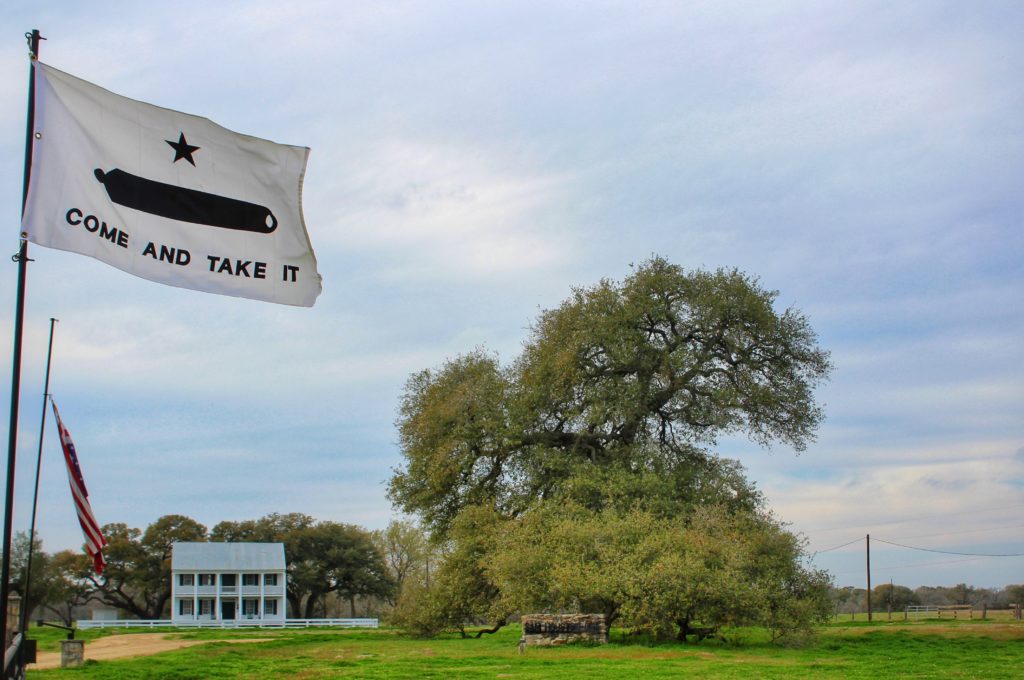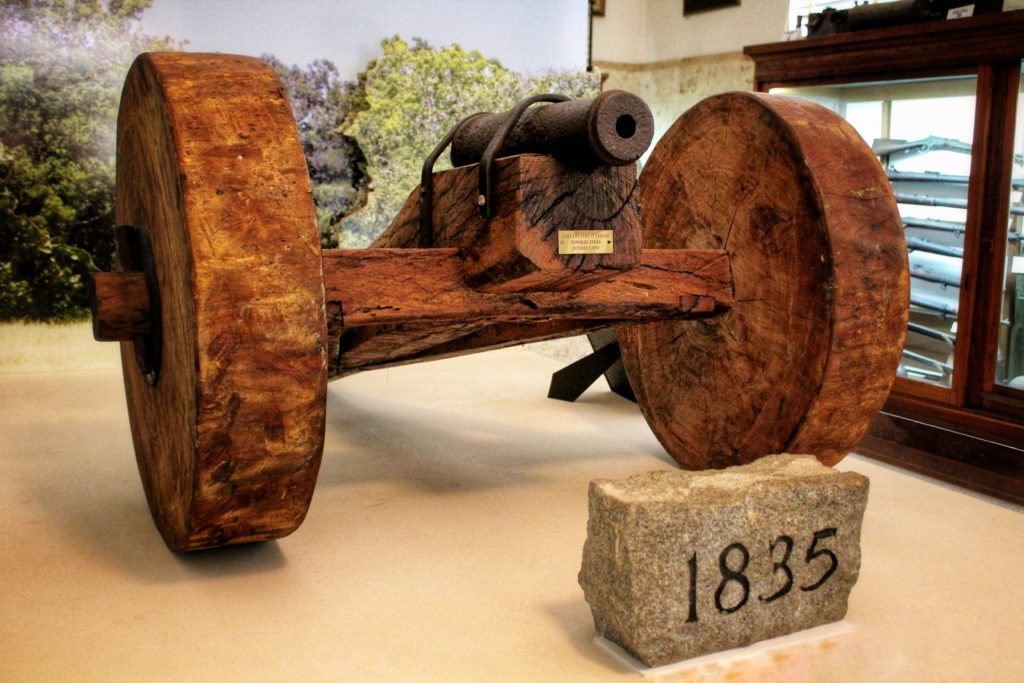Gonzales, Texas is where it all began.
Story and photos by Hannah J. Phillips

Sam Houston Oak
Due to a loophole in my school’s ever-changing curriculum, I took Texas history three times before I turned 18. As such, I was entirely unprepared for the recent revelation of a former roommate from North Carolina, who disclosed that she had not taken even one state-history course throughout her childhood. Shocking! And yet, despite my early indoctrination, my most tangible experiences of Texas history were mostly confined to the Alamo and the Texas Capitol building. Three years ago, this all changed with a day trip to Gonzales, Texas.
Looking back, I have no idea why I picked Gonzales that day. Along with Goliad and San Jacinto, I certainly knew the town’s name as one of the battle sites from the Texas Revolution—and not just any battle, either. Gonzales is where the first shots of the Texas Revolution were fired on Oct. 2, 1835, exactly five months before 59 delegates signed the Texas Declaration of Independence at Washington-on-the-Brazos on March 2, 1836, and 156 days before the fall of the Alamo.
The battle started when 18 townsmen refused to return a small cannon they had received from the Mexican government. Four years earlier, the people of Gonzales had requested armament for defense on the frontier, which arrived in the form of a bronze cannon; when Mexican forces demanded it back, the settlers signaled their refusal by fashioning the now-famous “Come and Take It Flag” from the wedding dress of a local woman. When the people of Gonzales successfully resisted the Mexican forces in the skirmish, both the flag and the cannon became symbols of the fight for independence.
Today, you can still view the cannon at the Gonzales Memorial Museum, an art-deco monument just beyond the town’s main square. Mirrored by the reflecting pool as you approach, the limestone complex seems unassuming at first glance—other items in the exhibition include a fairly normal sampling of small-town relics and archival photographs—but it houses a rare glimpse into one of the more pivotal moments from the Texas Revolution. Barely longer than the average human forearm, the bronze cannon hardly looks like it could cause much damage; symbolically, it marks the first stand for independence by the Texas settlers.
There remains some debate about whether the cannon on display is the actual cannon that fired the first shots. Some historians claim that the original went to San Antonio to defend the Alamo, while the one on display is actually a smaller cannon from the battle, called an esmeril, which was lost for exactly 100 years until a major flood uncovered it in 1936. Regardless, the cannon remains an icon of our unique state history, and Gonzales celebrates with a Come and Take It festival every October.

Gonzales’ Main Square
After browsing the rest of the exhibit, head back into town for local barbecue at Gonzales Food Market before diving into more history at the Gonzales County Jail Museum. Designed in 1887 to house 200 prisoners under riot conditions, the brick building still has its original concrete and steel cells for violent and non-violent inmates, as well as an eerie solitary confinement chamber. Today, it doubles as the Chamber of Commerce, so you can pick up a walking or driving tour pamphlet to trace a route through the town’s other significant spots.
My favorite detour is about 10 miles outside of town on U.S. Highway 90A, where a historic marker at County Road 361 leads to the McClure- Braches house at Cinco J Ranch. Here, you can stand beneath the outstretched branches of the Sam Houston Oak, where the general of the fledgling Texas army gathered his first troops. Receiving news that the Alamo had fallen, Sam Houston mapped out his strategy beneath this towering tree, initiating a month-long “series of strategic retreats”—my favorite description for running away from your problems. Known as the Runaway Scrape, these retreats culminated in a surprise attack at the battle of San Jacinto on April 21, 1836, during which Houston’s troops shouted the famous battle cry “Remember the Alamo” as they defeated General Santa Anna and sealed Texas’ independence as a new republic.
Between lively reenactments at Washington-on-the-Brazos and a 13-day commemoration of the Siege of the Alamo in San Antonio, there are many Texas Independence festivities to choose from this month. Wherever you choose to celebrate, just remember: It all started in Gonzales.
BEYOND TEXAS HISTORY
Once you’ve had your fill of Texas history, if that’s possible, head back to the town’s main square to browse antique shops or catch a movie in the historic Lynn Theater. At around $7 a ticket, I often consider the drive just for the cheap admission price. These days, however, I mostly pass through Gonzales en route to Palmetto State Park, an unexpected jungle oasis hidden right in the heart of Texas with beautiful shaded trails along the San Marcos River.


